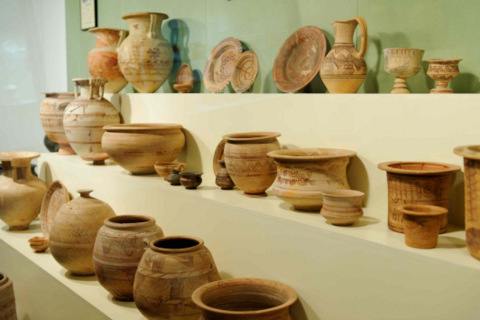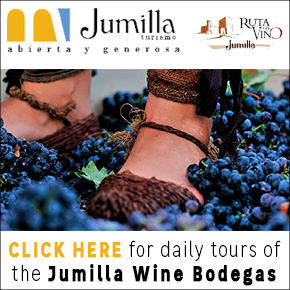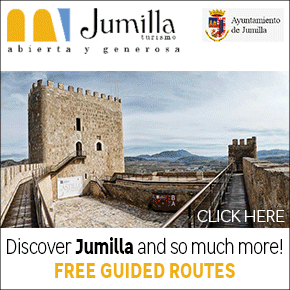article_detail
The 2,500-year-old Iberian site of El Cigarralejo in Mula
The necropolis and sanctuary of El Cigarralejo, Mula
Mula is the home of one of the most important Iberian archaeological sites not only in the Region of Murcia but also in Spain, a settlement consisting of a town settlement, a burial ground and religious a sanctuary on three separate levels.
Artefacts recovered from excavations in both the burial ground and teh sanctuary can be seen in the El Cigarralejo Museum of Iberian Art in Mula, along with the Archaeological Museum in the city of Murcia. Tantalisingly, though, the actual residentail settlement of the town itself has not yet been fully excavated and the references made to El Cigarralejo generally refer to the burial necropolis.
The Iberians
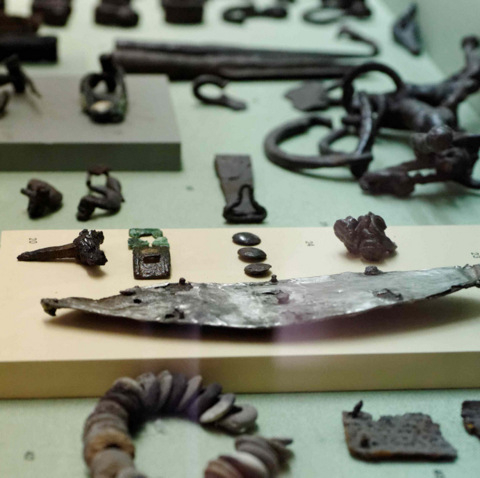 Iberian culture is broadly dated to between the 7th and 1st centuries BC. It emerged at the end of the Bronze Age, when the indigenous populations of what is now Spain had developed to a point where the use of iron for producing tools had lifted farming from a subsistence level activity and had made the laborious agricultural practices of growing food so efficient that surplus crops could be grown. This created the possibility for trade, which was boosted by the abundant natural mineral resources of Spain, providing raw mineral materials which could be smelted and traded.
Iberian culture is broadly dated to between the 7th and 1st centuries BC. It emerged at the end of the Bronze Age, when the indigenous populations of what is now Spain had developed to a point where the use of iron for producing tools had lifted farming from a subsistence level activity and had made the laborious agricultural practices of growing food so efficient that surplus crops could be grown. This created the possibility for trade, which was boosted by the abundant natural mineral resources of Spain, providing raw mineral materials which could be smelted and traded.
This co-incided with a time of interaction between eastern Mediterranean populations, seeking trading relationships and products throughout the Mediterranean basin, as Phoenicians, Carthaginians and Greeks ranged further and further in search of trade goods. The raw materials, crops and products produced by the Iberians led to a trading interchange which, in turn, influenced the development and customs of the native population, introducing writing, coinage, new crops, new technology (the Phoenicians brought the potter's wheel to Spain), all of which brought about a creative and cultural revolution.
The people who emerged from this age is known collectively as the Iberians.
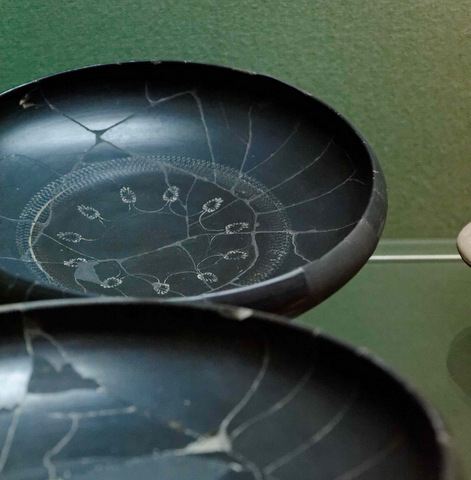 Settlements established by these trading nations controlled the interchange of goods, some individuals involved in this process naturally becoming wealthier along the way, creating a wealthier elite. This, in turn, fed back into the populations producing the goods, creating a multi-layered society which consumed imported trade goods, a society which is clearly reflected in the burials discovered: Greek and Italian ceramics and luxury goods are known to have been the prized possessions of those who could afford to buy them.
Settlements established by these trading nations controlled the interchange of goods, some individuals involved in this process naturally becoming wealthier along the way, creating a wealthier elite. This, in turn, fed back into the populations producing the goods, creating a multi-layered society which consumed imported trade goods, a society which is clearly reflected in the burials discovered: Greek and Italian ceramics and luxury goods are known to have been the prized possessions of those who could afford to buy them.
Inevitably this led to inter-tribal rivalries and competition for land and resources, and thus to the necessity for warriors, controlled by the elite and wealthy. This situation did not change in Murcia until the Romans invaded what is now Cartagena in 209 BC and a gradual process of Romanisation led to the disappearance of the Iberians as a definable culture.
 The native population lived together in fortified settlements (oppida), which were normally on raised ground, making them easier to defend. The Greek term “acropolis” literally means “high city”, making it appropriate to describe these early towns.
The native population lived together in fortified settlements (oppida), which were normally on raised ground, making them easier to defend. The Greek term “acropolis” literally means “high city”, making it appropriate to describe these early towns.
From above, the inhabitants could watch over the surrounding land and the main communications routes, and within the settlements economic, political and social activity developed. As well as these oppida there were also smaller, unfortified settlements which subsisted on agriculture and livestock farming.
The urban design of the settlements consisted primarily of residential blocks with streets in between. Homes were generally square or rectangular, whatever their size, and were designed around a main room containing a central fireplace and larder. Often they backed onto the main defensive wall, with the other walls built from stone and mud. The roofs were made from branches and mud.
Within the Region of Murcia there were many Iberian towns, burial grounds and shrines, showing that there was a significant increase in the population, and that social and economic structures were highly complex in the Iberian world.
The largest population centres, complete with holy places and burial grounds, have been found in Mula (El Cigarralejo), el Verdolay near Murcia, Jumilla and Los Nietos near the Mar Menor in the municipality of Cartagena.
Along with the settlements were the burial grounds and the complexes used for religious purposes, the sanctuaries, and all three elements are present on an important scale at El Cigarralejo.
The discovery and excavation of El Cigarralejo
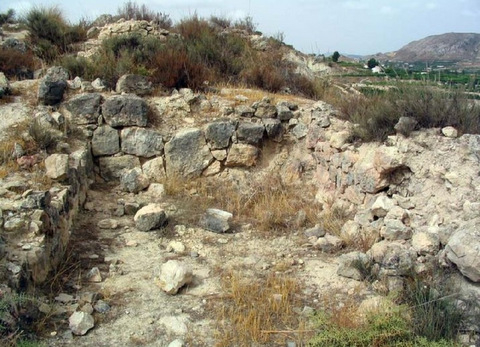 The El Cigarralejo site is located 4 kilometres from the modern-day town of Mula, on the right hand bank of the River Mula, on the extreme northern face of a mountainous series of outcrops. This privileged situation allowed it to dominate a network of communication routes, which used the natural layout of the land to link to other main Iberian settlements at Archena and Jumilla, and there are also other sites at Cehegín (Begastri) and Caravaca.
The El Cigarralejo site is located 4 kilometres from the modern-day town of Mula, on the right hand bank of the River Mula, on the extreme northern face of a mountainous series of outcrops. This privileged situation allowed it to dominate a network of communication routes, which used the natural layout of the land to link to other main Iberian settlements at Archena and Jumilla, and there are also other sites at Cehegín (Begastri) and Caravaca.
The site was discovered by chance when an Iberian ceramic pot containing ashes was found by an agriculturalist cutting a retaining wall into the hillside.
The burial ground or necropolis
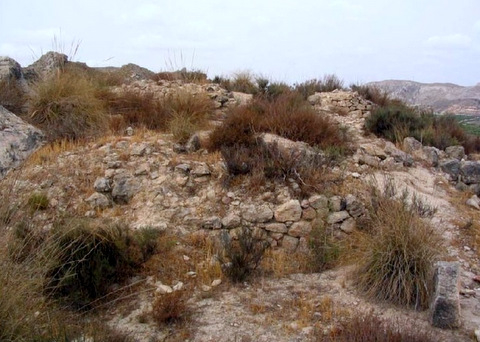 Excavations at the site began in 1947 and continued practically uninterrupted for the next 40 years, carried out by D. Emeterio Cuadrado Díaz, who owned the land upon which the burial necropolis is situated. He was a structural engineer, but his other great passion was archaeology and he dedicated much of his life to it.
Excavations at the site began in 1947 and continued practically uninterrupted for the next 40 years, carried out by D. Emeterio Cuadrado Díaz, who owned the land upon which the burial necropolis is situated. He was a structural engineer, but his other great passion was archaeology and he dedicated much of his life to it.
During these 40 years 547 individual burials were excavated, yielding a vast amount of materials and information relating to Iberian culture, much of which is now on display in the El Cigarralejo Museum in Mula.
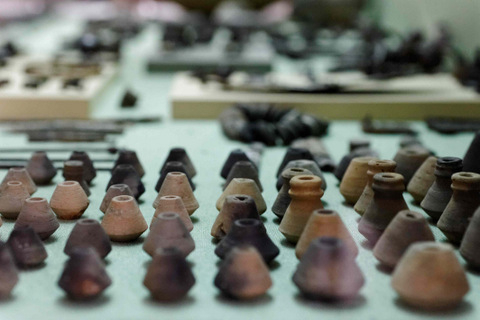 There may be other burials as yet undiscovered, but the land lying between the site excavated and the area above, in which the sanctuary was found, is privately owned, and it has not been possible to undertake further explorations.
There may be other burials as yet undiscovered, but the land lying between the site excavated and the area above, in which the sanctuary was found, is privately owned, and it has not been possible to undertake further explorations.
Little is known about Iberian religious practices or burial rites, but the evidence found in these burial sites shows that the deceased were cremated and buried with grave goods, and there is evidence of subsequent ritual offerings. Burial grounds were carefully defined and isolated, and were normally near the main communications routes around the town, as is the case at El Cigarralejo.
The site is geographically limited on three sides, with steep cliff faces on two of them, so during the years of use, which is estimated to represent a period between the 4th century BC and the middle of the 1st century BC , burials were put on top of each other to limit its spread. In some places the tombs were laid up to 8 deep, although in general the average is 4.
It is possible that the site was in use for longer, but the more modern burials would have been nearer the surface and thus subjected to modern agricultural activity and probably destroyed during the process of creating planting areas for almonds. In addtion, of course, there may be still more in the unexcavated areas.
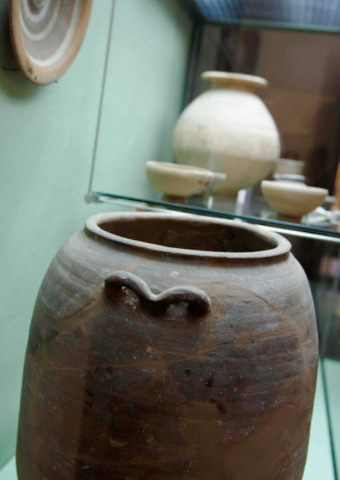 The exact nature of the burial ritual depended on the status of the deceased, and although the burials are anonymous, the status and sex of the individual are generally apparent in the grave goods discovered.
The exact nature of the burial ritual depended on the status of the deceased, and although the burials are anonymous, the status and sex of the individual are generally apparent in the grave goods discovered.
Prior to burial the body was cremated. It appears that the deceased were cremated in their finest clothes, some of the burials yielding remains of fine cloths, together with personal jewellery , adornments or treasured possessions. The cremation took place on a pyre or in the tomb itself, which was dug into the ground.
The most valuable personal possessions of the deceased were interred with the cremated remains: swords broken in two, lances, armour and shields have been found in the graves of warriors, agricultural equipment in the graves of farmers, even the tools of ceramicists and a tanner been found. Their wives are accompanied by spinning weights, jewellery and items of personal adornment, as well as domestic ceramics, some of them imported. The burnt remains and grave goods were placed in the grave, sometimes (but not always) in a ceramic urn, and covered with stonework or a monument.
The Sanctuary
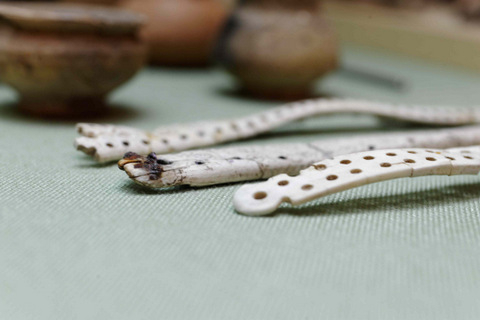 The second area of the El Cigarralejo site which has been excavated is the sanctuary, which was investigated between 1946 and 1948.
The second area of the El Cigarralejo site which has been excavated is the sanctuary, which was investigated between 1946 and 1948.
The site was again discovered by chance after a piece of Roman ceramic was found nearby. A surface prospection revealed remains of Iberian ceramics and the subsequent excavations showed a rectangular building, 29 metres by 12 metres, divided by a central axis, a 1.5 metre wide passageway which cut the sanctuary from east to west.
In one corner was the sancta sanctorum or inner sanctuary, in which the offerings (ex-votos) were made, and there are other rooms, some of which would possibly have been used for dressing or for residential purposes of the sanctuary attendants, or priests.
Very little is known about the beliefs, calendar and rituals of Iberian religion. Greek and Roman sources describe very briefly a religion which closely related to nature, fertility and heavenly bodies, and some accounts point to the existence of priests, but we cannot know what their exact roles might have been or whether they were considered to be a separate caste.
Certain natural enclaves took on great importance and became shrines, including caves, springs, other sources of water, woods and raised ground. In an area such as Cehegín nearby, a spring, the Fuente del Recuesto, was chosen as a sanctuary: smashed shards of pots indicate that a number of offerings were brought to the source and broken on site, possibly offering wine to the soil.
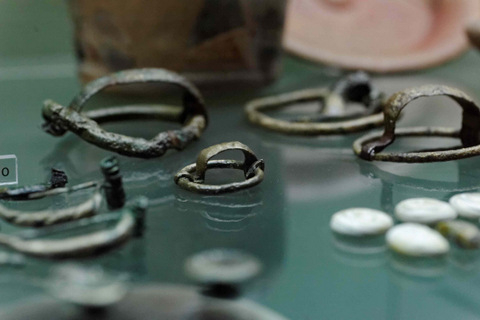 Although the early sanctuaries found to date all focused on natural elements, more substantial man-made structures were built in the more populous settlements, dating to the periods of greater prosperity and expansion, around the 4th century BC. These include La Luz in Murcia and El Cigarralejo.
Although the early sanctuaries found to date all focused on natural elements, more substantial man-made structures were built in the more populous settlements, dating to the periods of greater prosperity and expansion, around the 4th century BC. These include La Luz in Murcia and El Cigarralejo.
Exposure to external cultures and the widespread practice of building temples throughout the Mediterranean world is likely to have influenced the development of a more temple-based form of religious practice as the culture developed. One feature is common to all sites: the presence of offerings, gifts given to ask for a favour or as thanks.
The sanctuary of El Cigarralejo is believed to have been built during the 4th century BC and fallen into disuse at the end of the 2nd century BC, at which point a number of these offerings had been buried beneath the floor. The exvotos took several forms, and included a number of pieces of jewellery, 62 rings and 177 sculpted figures carved from sandstone, 17 of them human and 160 in the form of horses.
Horses were often depicted in Iberian sculpture, and as the whole culture is geared towards 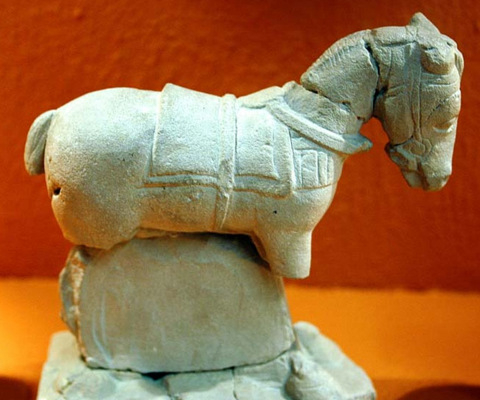 agricultural production it is likely that there was some sort of cult linked to the symbology of the horse. The horse goddess Epona appears widely throughout the Roman world and the Mediterranean, a symbol of fertility and fecundity, and given the exposure of the Iberians to these external cultures it is quite possible that similar symbology was present in the Iberian religious practices.
agricultural production it is likely that there was some sort of cult linked to the symbology of the horse. The horse goddess Epona appears widely throughout the Roman world and the Mediterranean, a symbol of fertility and fecundity, and given the exposure of the Iberians to these external cultures it is quite possible that similar symbology was present in the Iberian religious practices.
Horses were certainly a status symbol in Iberian society. Few could afford the luxury of owning a horse, their ownership appearing to be linked to the elite and warrior classes, according to the traces of horses and their tack discovered in grave goods. The exvotos of horses found at El Cigarralejo were carved from sandstone, appearing to have been created by different sculptors.
Other ex-votos, however, were discovered in the side of the mountain, and could indicate a sudden abandonment of the site, perhaps due to fire or 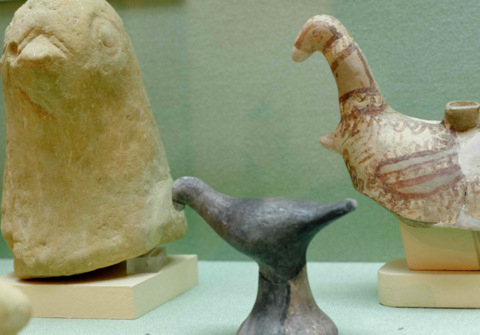 its destruction. It is possible to date the cessation of activities in the sanctuary fairly accurately due to the type of ceramics found and the lack of any indication of Roman remains, and its use seems to have ended in the late 2nd century BC.
its destruction. It is possible to date the cessation of activities in the sanctuary fairly accurately due to the type of ceramics found and the lack of any indication of Roman remains, and its use seems to have ended in the late 2nd century BC.
More details about the Iberian culture can be found by clicking here, and there is also a separate entry about the El Cigarralejo Museum itself in Mula, which contains an impressive collection of the artefacts recovered from the Necropolis and sanctuary excavations.
Contact Spanish News Today: Editorial 966 260 896 /
Office 968 018 268




